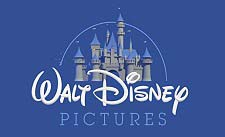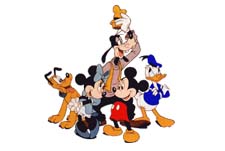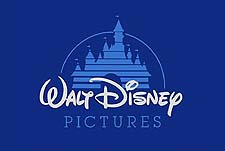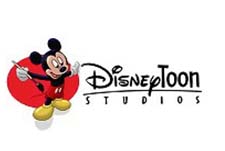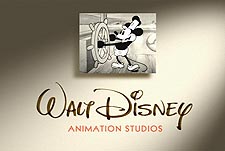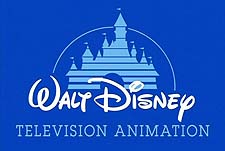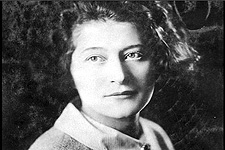No other studio is more better known for producing animated films than Walt Disney Studios, but it did not start that way. Walt Disney- and many other animation pioneers such as Isadore Freleng, Carl Stalling and Ub Iwerks- learned their skills making commercial cartoons and a handful of
shorts in Kansas City. But KC was not where an creative talent wanted to be, and by 1924, Walt, his wife Lillian and his older brother Roy headed west to Hollywood to make their fortunes. The brothers founded
in the San Fernando Valley that same year. Working for
series.
Walt developed his second major character-
Oswald the Lucky Rabbit- while at Winkler. Disney and Winkler had a falling out, and Walt stepped out on his own... with his brother, old friend Ub Iwerks, and an idea for a new character. The last Oswald Disney directed was
Sleigh Bells, and it released on July 23, 1928. Walt and Ub thrashed out a story with their new character, legend has it Ub drew the first Mickey Mouse cartoon- entirely on his own!- in three hectic days.
Plane Crazy is said to have first been shown to limited audiences for reaction in May of 1928.
Just as Walt and Ub were finishing up their second Mickey Mouse cartoon, a new revolution swept through Hollywood: sound. Walt recognized it for what it was, a new way to make movies. Rather than rush his two Mickey shorts out- shorts that were admittedly just like every other cartoon of the period- Walt decided that he would integrate sound into them.
Steamboat Willie was the first film they added sound to, and it premiered at the Colony Theater in New York on November 18, 1928. Walt had many more hiccups along his path, but he was always at the forefront of innovation and artistic excellence.
The studio spent the next decade working on their shorts. First Mickey, then his pals, then sound cartoons in the
Silly Symphonies series.
Flowers And Trees from that series was the first color animated cartoon, Mickey followed the trend three years later in
The Band Concert.
But Walt and his studios greatest innovation was not to release until the end of 1937. Often called "Walt's Folly" by the media of the time, Walt was convinced that feature films were the future of Walt Disney Studios animated films. So he set the course of the studio to produce
Snow White And The Seven Dwarfs, and nearly bankrupting the studio in the process. But Walt's gamble paid off, and the feature film was a fabulous success, and finally put the upstart Disney and his studio on the map in Hollywood.
Features soon eclipsed shorts in the productions schedule, and even the mouse that started it all was retired by 1955. Despite a temporary interruption during World War II, animated fairy tales ruled the realm at Disney. By 1962, the shorts department at the studio was shut down, with production focusing on bi-yearly features and television production. Walt's attention was elsewhere, with the opening of Disneyland in southern California. Following Walt's death in 1966, the studio was stunned, and the malaise that followed showed in their output for the next twenty years. The 1985 feature release of
The Black Cauldron failed to break even.
Disney CEO and Walt's son-in-law Ron Miller was ousted from the company, and replaced by studio wunderkind Michael Eisner. Eisner pushed a new vision, instituting a new style in Disney feature animation. Disney features soon became bombastic animated musicals, using music as well as high-quality animation to attract audiences. This coincided with the introduction of computer-aided animation techniques, the first of which was CAPS in the late 1980s. Also playing a role was
Who Framed Roger Rabbit, a Disney-produced film with both live action and animated element that helped re-spark interest in Disney animation. They achieved some great successes-
Beauty And The Beast became the first animated film nominated for a Best Picture Oscar, and
The Lion King which became the most financially successful hand-drawn animated picture of all time.
But what goes up must come down, Eisners' rise to the top in the 1990's was followed by an equally massive dip in the 2000's. The studio just could not come to grips with the transition to computer generated films. Eisner lost the confidence of the company and Roy Disney, nephew of Walt Disney. Eisner was ultimately ousted in what was near a hostile event.
After Eisner left and things settled down, Disney was able to purchase partner
PIXAR Studios in an all-stock transaction worth $7.4 billion. Steve Jobs became the largest single shareholder of Disney stock and John Lasseter became Chief Creative Officer of both Pixar and the Walt Disney Animation Studios.
On December 31, 2009, Disney acquired Marvel Entertainment, Inc. for $4.24 billion. Disney has stated that their acquisition of the company will not affect Marvel's products, neither will the nature of any Marvel characters be transformed. In August 2011, Bob Iger stated on a conference call that after the success of the Pixar and Marvel purchases, he and the Walt Disney Company are looking to "buy either new characters or businesses that are capable of creating great characters and great stories." By early February of 2012, Disney completed its acquisition of UTV Software Communications, expanding their market further into India and Asia.
